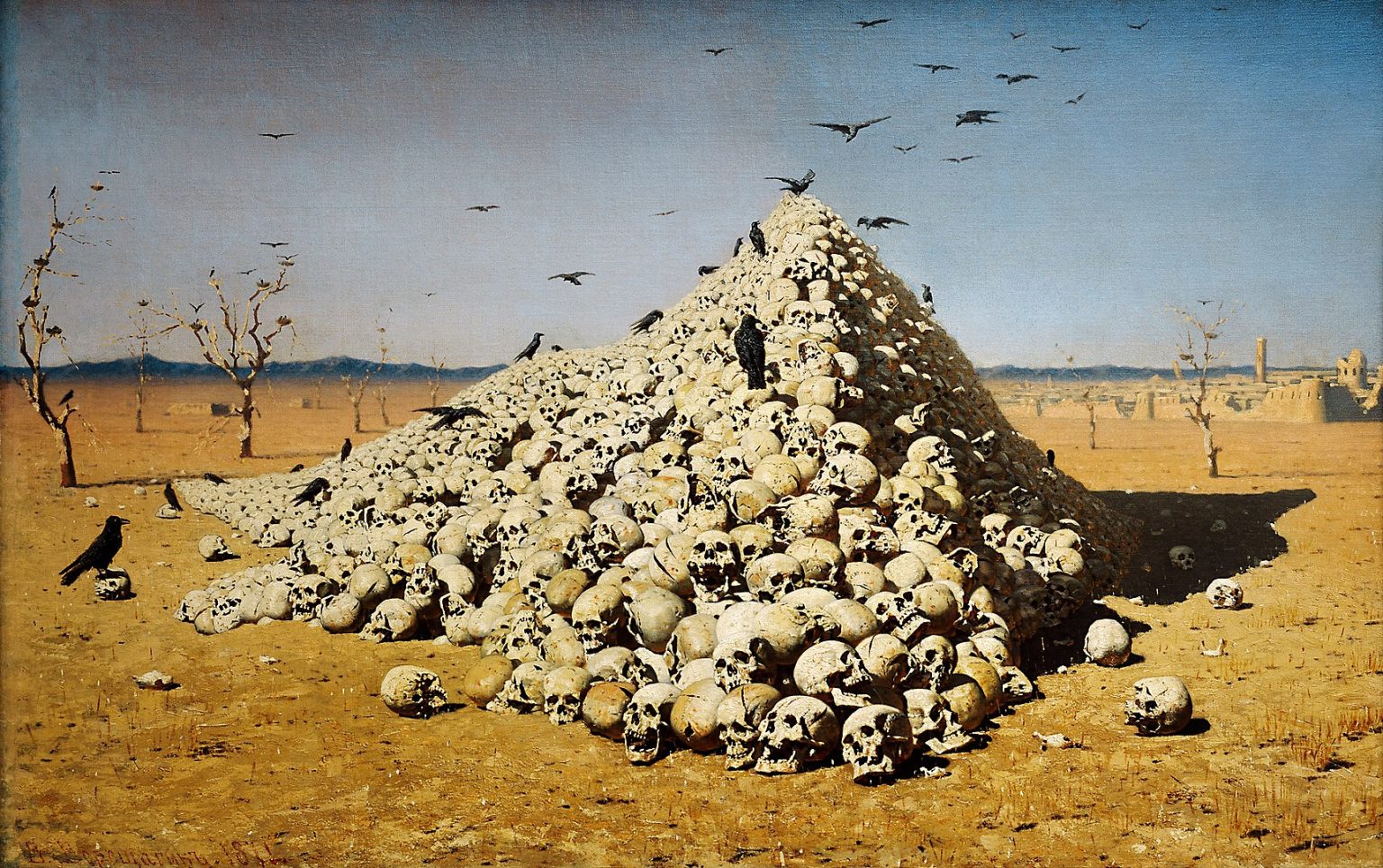In many popular movies, battles are the most gripping scenes. We admire mighty heroes killing several enemies with one blow. We enjoy the heat of combat, the thrill of victory…
Here are a piece of music and a painting, both of which show the reality of war.
Mars Playing the Euphonium
The orchestral suite The Planets, by British composer Gustav Holst, begins with the movement “Mars, the Bringer of War.”
Mars is a martial piece, but a somewhat unusual one. As a rule, a march has four beats in a bar to simulate the rhythm of marching – “left, right, left, right.” Holst has the drums repeat another rhythmic figure: one-two-three-four-five. The fifth beat baffles us.
The brass instruments sound peculiar, too. There is no glory, no patriotic pathos in their call. It seems completely inhuman. The music drives forward passionlessly, like a huge machine that crushes everything and everyone.
The last seconds of the movement describe the very crux of war – destruction.
About 6:33, the drum pulse fades out and we hear only the low howling of a euphonium. When that moment comes, my blood runs cold.
The people, who attended the premiere of The Planets probably felt the same. The people who attended the premiere of The Planets probably felt the same. The suite premiered on September 29, 1918. A few weeks later, on November 11, World War I ended.
The Apotheosis of War
In this painting, black scavengers are flying about a pyramid-like pile of skulls set on bare earth. The skulls bear visible traces of attacks with sabers and arrows; the people to whom they belonged have been killed.
Pay attention to the colors. These are the colors of a barren desert. Even the blades of grass we can discern in the foreground are yellowish-brown.
In the 1860s, Russia waged a war of conquest in Central Asia.
A young Russian painter, Vasily Vereshchagin, knew from a friend that the governor of Russian Turkestan needed a painter for military service. The artist enlisted. He joined the Russian garrison defending the Samarkand fortress, in 1868.
Vasily Vereshchagin saw battles and their aftermaths with his own eyes – moreover, he fought in them himself.
The Apotheosis of War was one among a number of canvases, which were painted by Vasily Vereshchagin that were influenced by the events in Turkestan. According to the inscription on the frame, the artist dedicated The Apotheosis “to all great conquerors, past, present and to come.”
…My grandfather was a veteran of World War II. He died before I started to ask adult questions.
When I grew older and more aware, I asked my mother, his daughter: “Mom, can you tell me some of grandfather’s front stories?” She could not.
It turned out that the soldier, who had been at war for four years, had told his children nothing about war during his whole life. Nothing at all.
Why? I have repeated this question to myself many times and frequently doubted whether I really wanted a detailed answer.


